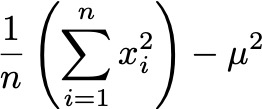(30 points) Write a function to determine whether a year, given as input, is a leap year. A year is a leap year if it is evenly divisible by 4, unless it is evenly divisible by 100 and not 400. So 2000 was a leap year, but 2100 and 2200 will not be. Then write a program that asks the user to enter a year and uses the function you wrote to determine whether the year is a leap year. The program then prints the result.
Your program must give an error message and exit if the user enters anything other than a positive integer.
Here is sample output. Each is from a separate run of the program.
Year> 2020↵
2020 is a leap year
Year> 2000↵
2000 is a leap year
Year> 1900↵
1900 is not a leap year
Year> hello↵
You must enter the year as a positive integer
Year> -12↵
You must enter the year as a positive integer
To turn in: Please turn in the program in the file leap.py.
(30 points) Write a program that prompts the user for a list of numbers, one per line. When the user enters “done”, print the maximum, minimum, and mean (average) of the numbers entered.If the user enters anything other than a number and “done”, give an error message.
Your program must give an error message and exit if the user enters anything other than an integer.
Here is sample output. Each is from a separate run of the program.
Enter number> 13↵
Enter number> 12↵
Enter number> 11↵
Enter number> 10↵
Enter number> 9↵
Enter number> xyzzy↵
Not a number
Enter number> done↵
The maximum is 13
The mean is 11.00
The minimum is 9
Enter number> -75↵
Enter number> -135↵
Enter number> 32↵
Enter number> 127↵
Enter number> 21↵
Enter number> 138↵
Enter number> 56↵
Enter number> done↵
The maximum is 138
The mean is 23.43
The minimum is -135
To turn in: Please turn in the program in the file nums.py.




